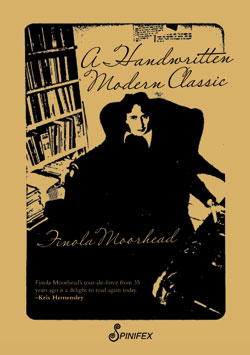- 113: INVISIBLE WALLSwith A Walker & D Disney 112: TREATwith T Dearborn 111: BABYwith S Deo & L Ferney 110: POP!with Z Frost & B Jessen 109: NO THEME 12with C Maling & N Rhook 108: DEDICATIONwith L Patterson & L Garcia-Dolnik 107: LIMINALwith B Li 106: OPENwith C Lowe & J Langdon 105: NO THEME 11with E Grills & E Stewart 104: KINwith E Shiosaki 103: AMBLEwith E Gomez and S Gory 102: GAMEwith R Green and J Maxwell 101: NO THEME 10with J Kinsella and J Leanne 100: BROWNFACE with W S Dunn 99: SINGAPOREwith J Ip and A Pang 97 & 98: PROPAGANDAwith M Breeze and S Groth 96: NO THEME IXwith M Gill and J Thayil 95: EARTHwith M Takolander 94: BAYTwith Z Hashem Beck 93: PEACHwith L Van, G Mouratidis, L Toong 92: NO THEME VIIIwith C Gaskin 91: MONSTERwith N Curnow 90: AFRICAN DIASPORAwith S Umar 89: DOMESTICwith N Harkin 88: TRANSQUEERwith S Barnes and Q Eades 87: DIFFICULTwith O Schwartz & H Isemonger 86: NO THEME VIIwith L Gorton 85: PHILIPPINESwith Mookie L and S Lua 84: SUBURBIAwith L Brown and N O'Reilly 83: MATHEMATICSwith F Hile 82: LANDwith J Stuart and J Gibian 81: NEW CARIBBEANwith V Lucien 80: NO THEME VIwith J Beveridge 57.1: EKPHRASTICwith C Atherton and P Hetherington 57: CONFESSIONwith K Glastonbury 56: EXPLODE with D Disney 55.1: DALIT / INDIGENOUSwith M Chakraborty and K MacCarter 55: FUTURE MACHINES with Bella Li 54: NO THEME V with F Wright and O Sakr 53.0: THE END with P Brown 52.0: TOIL with C Jenkins 51.1: UMAMI with L Davies and Lifted Brow 51.0: TRANSTASMAN with B Cassidy 50.0: NO THEME IV with J Tranter 49.1: A BRITISH / IRISH with M Hall and S Seita 49.0: OBSOLETE with T Ryan 48.1: CANADA with K MacCarter and S Rhodes 48.0: CONSTRAINT with C Wakeling 47.0: COLLABORATION with L Armand and H Lambert 46.1: MELBOURNE with M Farrell 46.0: NO THEME III with F Plunkett 45.0: SILENCE with J Owen 44.0: GONDWANALAND with D Motion 43.1: PUMPKIN with K MacCarter 43.0: MASQUE with A Vickery 42.0: NO THEME II with G Ryan 41.1: RATBAGGERY with D Hose 41.0: TRANSPACIFIC with J Rowe and M Nardone 40.1: INDONESIA with K MacCarter 40.0: INTERLOCUTOR with L Hart 39.1: GIBBERBIRD with S Gory 39.0: JACKPOT! with S Wagan Watson 38.0: SYDNEY with A Lorange 37.1: NEBRASKA with S Whalen 37.0: NO THEME! with A Wearne 36.0: ELECTRONICA with J Jones
Virginia Woolf
Virginia Woolf’s Incidental Pilot, Marianne Wex’s Legroom and the Dancing Man
I first read Virginia Woolf’s short – just six pages – essay, ‘Flying Over London’ (Selected Essays, Oxford University Press, 2009), in a café in Sydney. The barista deftly worked a rising swan into the frothy surface of my coffee.
Posted in ESSAYS
Tagged Marianne Wex, Meredith Wattison, Virginia Woolf
A Writing Surface of One’s Own
A waitress here has The Owl and The Pussycat tattooed on her goose-pimpled biceps. They sweetly peek from the hem of an unseasonable short sleeve. Indigo-inked, theirs is a nursery frieze’s block print detail. She is all at sea in her ravaged pea-green tights. Her roughly made skirt abounds with floating, shifting dice. It retains its looped yellow fringing, a faded tangelo backing, from its vintage past life as a painted velvet souvenir cushion cover. She has a ring at the end of her nose, her nose, a ring at the end of her nose. Her girlfriend’s lips, hair and boots are cerise. With honey, she sweetens – and makes a meal of – her sweetly gratis hot tea, blushes like a peach, purrs. The illustrated waitress hovers, calls ‘Who?’ and, like a zephyr, swoops with a cloth, a notepad and a fluffy rainbow-haired Troll Doll-ended pencil.
Posted in ESSAYS
Tagged Annie Leibovitz, Emily Dickinson, Meredith Wattison, Virginia Woolf
Silence Turned into Objects: Looking at where Poets Write
Among the most extreme, in the sense of horrific, writing places for poems bequeathed to us would be the conditions in which Ezra Pound produced The Pisan Cantos. There is some speculation as to the exact number of those Cantos …
Posted in GUNCOTTON
Tagged Alex Skovron, Alison Croggon, Ezra Pound, Jacinta Le Plastrier, Rainer Maria Rilke, Virginia Woolf
IWD: Murder, She Wrote
 Three lines from The Seventh section of Finola Moorhead’s A Handwritten Modern Classic, first published in 1977 and re-issued March 2013 by Spinifex Press, close out a varied discussion by the author on the political nature of death, that Socrates’ death ‘was political’ (as underlined in the handwritten original), that Socrates was not a writer and that writers ‘need teachers like Socrates’. In the same section she argues that artists often use ‘Another’s pain … for the success of expression’. ‘Art as comfort’, Moorhead follows on, ‘ — strange concept. / Such assumptions aren’t questioned often enough.’
Three lines from The Seventh section of Finola Moorhead’s A Handwritten Modern Classic, first published in 1977 and re-issued March 2013 by Spinifex Press, close out a varied discussion by the author on the political nature of death, that Socrates’ death ‘was political’ (as underlined in the handwritten original), that Socrates was not a writer and that writers ‘need teachers like Socrates’. In the same section she argues that artists often use ‘Another’s pain … for the success of expression’. ‘Art as comfort’, Moorhead follows on, ‘ — strange concept. / Such assumptions aren’t questioned often enough.’
Posted in GUNCOTTON
Tagged Finola Moorhead, Jacinta Le Plastrier, Libby Hathorn, Rachael Bailey, Rachael Mead, Susan Hampton, Virginia Woolf













